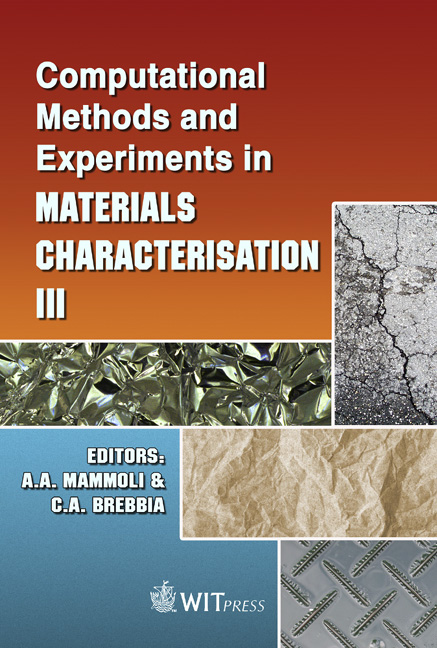Modelling Of Viscoelastic Properties Of A Curing Adhesive
Price
Free (open access)
Transaction
Volume
57
Pages
11
Published
2007
Size
724 kb
Paper DOI
10.2495/MC070241
Copyright
WIT Press
Author(s)
J. de Vreugd, K. M. B. Jansen, L. J. Ernst & J. A. C. M. Pijnenburg
Abstract
Thermoset adhesives are widely used in high tech applications to join two bodies together. The main advantages of using adhesives are the low weight of the construction and the easy way to apply the adhesive to the surfaces which have to be fixed together. The disadvantage of thermoset adhesives however is that cure shrinkage occurs. Shrinkage and evolution of mechanical properties during cure leads to development of internal stresses. In this paper, the mechanical behaviour of a curing adhesive is investigated. In the case of using a thermoset adhesive in high precision applications like optical instruments, care should be taken. Small displacements and distortions of important components caused by cure shrinkage may already lead to malfunctioning. For this reason a material model suitable for implementation in a finite element program is developed to predict stresses and strains in glued objects. The temperature and cure dependent viscoelastic shear modulus of the adhesive are obtained by using Dynamic Mechanical Analyzing methods. The bulk modulus is obtained at fully cured state with a high pressure dilatometer. Curing-time–time superposition is applied to model the shear modulus at any state of cure. It is assumed that the bulk modulus remains constant during cure. The kinetics of the adhesive is investigated by using Dynamic Scanning Colorimetric techniques. The relation between time and degree of cure is modelled by making use of the Kamal- Sourour equation. Also diffusion limitation is added to this equation. The cure shrinkage of the adhesive is experimentally determined by making use of the principle of Archimedes. Finally a validation experiment is performed. The validation experiment is simulated in the finite element program ABAQUS and compared with the experiment. It turned out that the developed material model is accurate enough to predict reaction forces, stresses and strains caused by cure shrinkage. Keywords: adhesive, cure shrinkage, DMA, DSC, viscoelastic properties.
Keywords
adhesive, cure shrinkage, DMA, DSC, viscoelastic properties.





